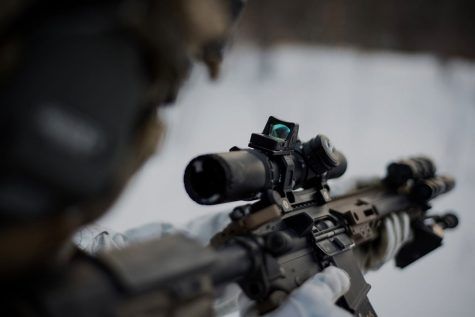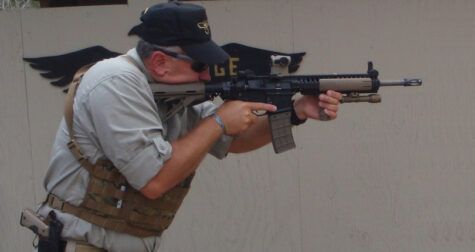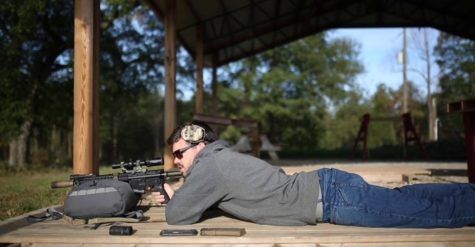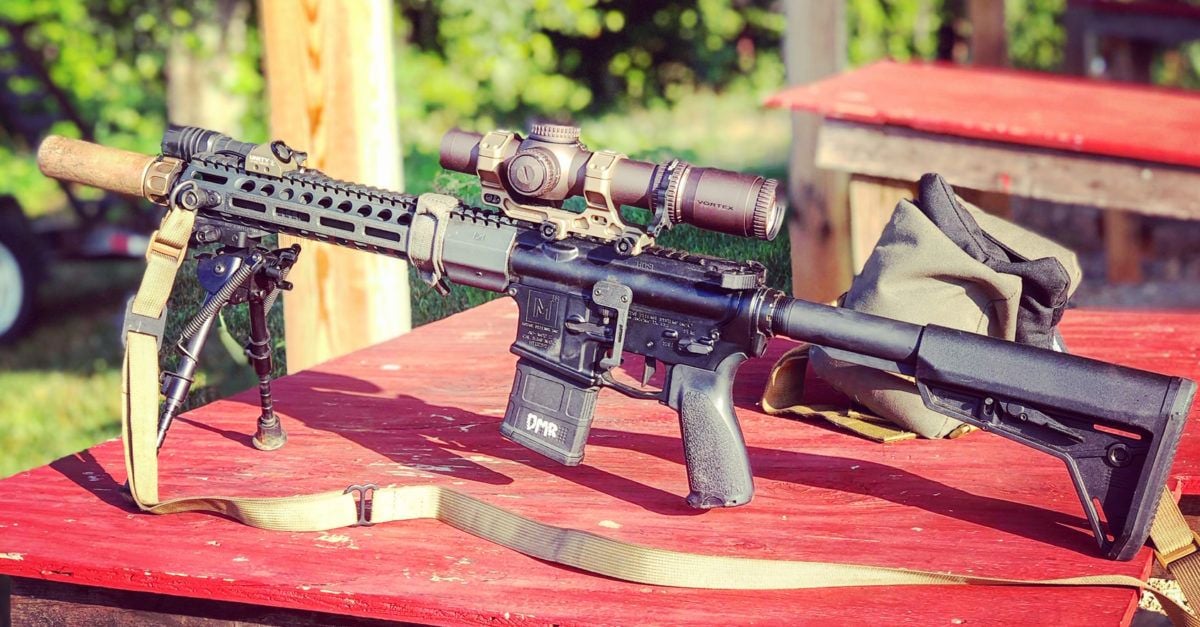
In the second part of our recent conversation with Mark Smith of JBS Training Group, we talk about how to have the best LPVO setup possible, why you might consider a low powered variable optic over a dot optic, and reasons why you might opt for an offset dot optic on your firearm.
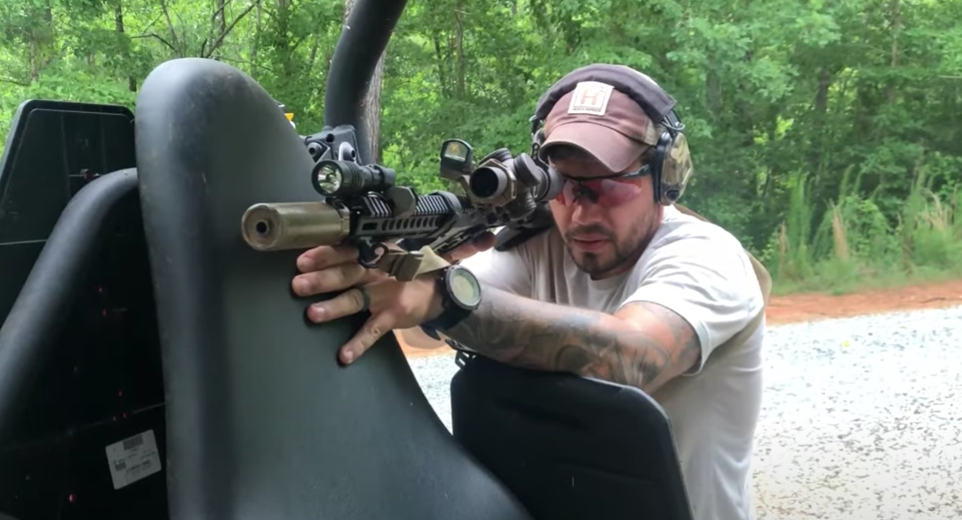
In case you missed the first part of our conversation with Mark, you can read that article here.
Q: Mark, you’re a proponent of the LPVO…can you walk us through why you think it’s worth considering on a “general purpose” AR?
Mark Smith, JBS Training Group – The first thing you have to understand is that shooting is all about seeing. Vision drives the train. If I cannot see it, I cannot shoot it. There have been many times when I’ve been hunting that I knew I saw something over there in that tree line, but I could not zoom in on it and know exactly what I was looking at. This is very important in competition and in real life… It’s critical to be able to identify what we are looking at and to be able to see it well enough to shoot at it. When we talk about rifles specifically our capabilities are pretty much only ended when we cannot see any further.
I think running a dot on a rifle definitely has its place. I run plenty of rifles that only have red dots on them. However, if we are talking about a gun that you can use for anything, if you cannot see beyond 100 yards, you have a 100-yard gun, regardless of its other characteristics. It’s important to understand that.
You don’t necessarily need an LPVO because you have a rifle. You need an LPVO if you live in an appropriate environment where you may have to shoot at something beyond 100 yards. Think about the rural highway patrolman riding around Texas, or the guy that rides around on his farm checking fence line… There’s any number of scenarios where you might need to see a little bit better.
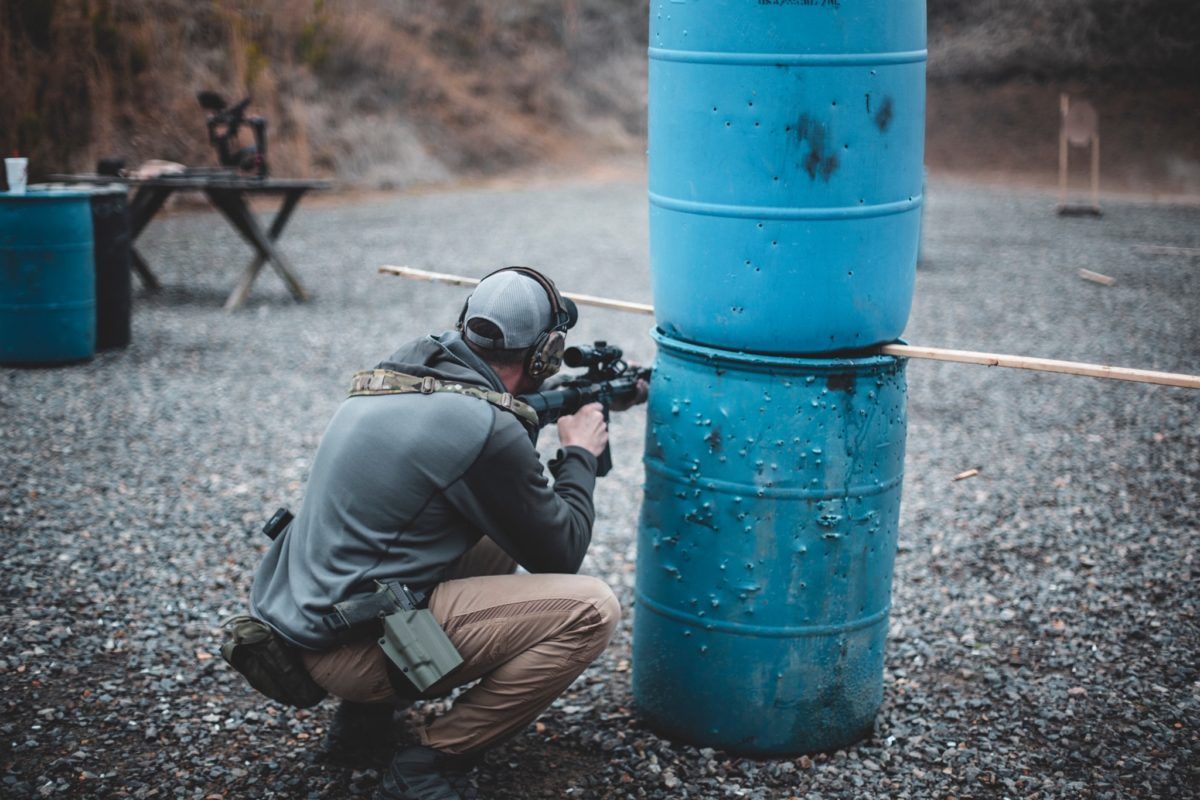
The guy who lives in an apartment in downtown Charlotte isn’t going to find as much use for a LPVO as someone like myself who lives in a rural area in upstate South Carolina at the base of the Appalachian chain. There’s a lot of open space where you can see things farther out if you have the equipment.
Another thing to understand is that an LPVO isn’t just for a rifle that you’re going to shoot out to 600 yards. It’s also ideal for a rifle that you’re going to shoot 200 yards with. 200 yards isn’t that far until you’re shooting at an A-zone in a tree line that’s not painted bright white in the middle of a field. It becomes critical to look for, find, and see what you are actually shooting at.
Q: If we’re planning a build topped with an LPVO, what does that ideal rifle look like?
Mark Smith, JBS Training Group – When we are trying to build what the industry would call a “general-purpose carbine,” we have tons of available things today that have not always been around. If they were, they were not as good as they are now. If I am looking to strictly run an LPVO with no other gear attached to the gun, I want to make sure that the 1x on that LPVO is as flawless as I can get it. This is because the majority of our shooting is likely to be at 1x. Therefore, 1x needs to be very good.
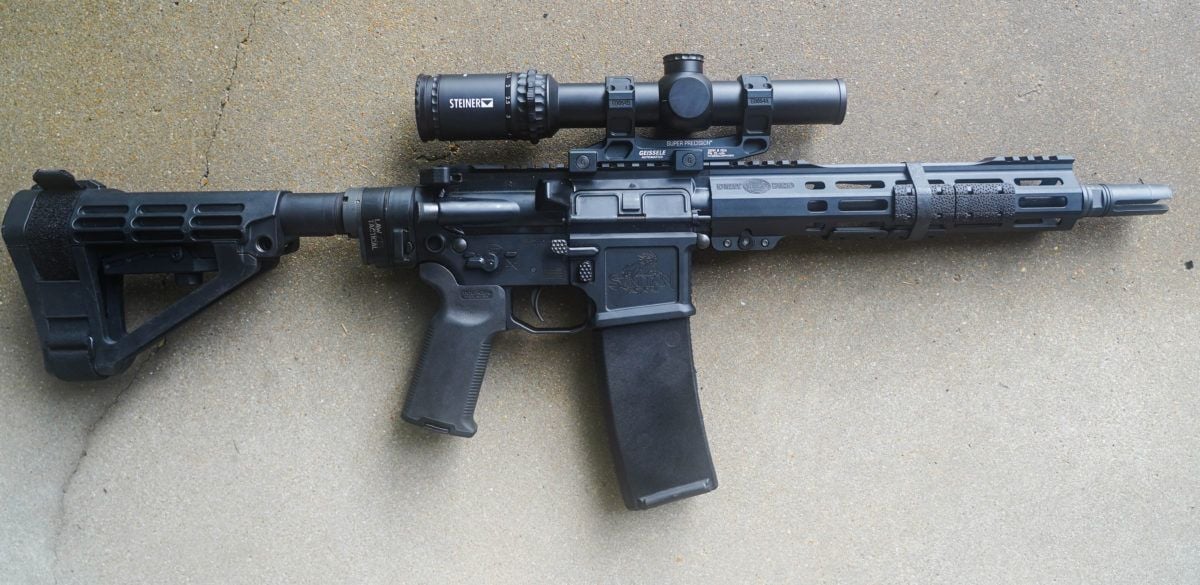
The zoom and how high the magnification goes is strictly dependent on what you find you need based on your application. For some people, 4x is plenty. For others, 6, 8, 10 is what they want. The beauty of living in America is that we have so many options now…and it’s ever-changing. We’re not the end of it. It’s going to get better next year.
One of the really cool things that has happened lately is the implementation of offset dots that are durable and have clarity and good optical value. Now, we can slap a 2.5-10 on something like a Badger Ordnance Condition One mount, run an offset dot on a J-arm. Now he has a very capable system out to 600 yards just by buying the right gear. In this case, you didn’t have to buy anything different, but a scope mount to have access to that 1x capability.
So, there are two ways to approach what it looks like. I would look for a good 1x if I was only going to run an LPVO. If not, I would look for a very solid system that employs two optics…One is the offset dot that I would use, and the other is the magnified optic that I would use. If I went that route, I would understand that the offset dot may be the primary optic inside of a certain distance.
Q: I think people believe they can just toss an offset dot on their rifle and think that they are set and ready. Are there considerations to having an offset red dot that need to be addressed?
Mark Smith, JBS Training Group – Yes. Offset dots are not just plug-and-play. If we are perhaps intending to use the offset dot as a primary, it had better be right on… I’m not talking about hitting an IPSC at 25 yards. I’m talking about hitting an index card at 50 yards …that’s the kind of accuracy I am looking for. We have to approach any optic like that. We have to be super detailed in how we are mounting it and zeroing it because it may very well be our primary optic, depending on the situation.
Also, some factors go into mounting and zeroing an offset optic. The gist is that you want to make sure that you are following manufacturer-specified torque values, and make sure you are using Loctite, if required. Just follow the instructions and don’t assume that you know it all, and then go out to the range and learn how to shoot it. Dry fire with it. Learn how to zero it.
There’s plenty of information out there on how you should be doing this. Understand that the dot optic you have hanging off your gun’s side may become extremely important in a certain situation. It’s imperative that we have it squared away and that we know what we are doing when it comes to utilizing it and employing it.
Q: Anything else you want to address when it comes to optics?
Mark Smith, JBS Training Group – A good MIL-based reticle system that has numbers in it is ideal. There is a ton of great glass out there. No gripes about the quality, but when you are trying to count four and a half MILs on a reticle that does not have numbers, it becomes very tricky sometimes, and I have experienced, and I have watched people hold the wrong MIL shot after shot after shot because they simply counted wrong. It can be very tricky on some of these reticles to find exactly where we want to be.
Another issue is that when we dial up higher magnification levels, it’s very important to have as much clarity as we need. If the clarity is super-duper at 1x but terrible at 8x, I might be shooting a dot because I can’t see anything anyway.
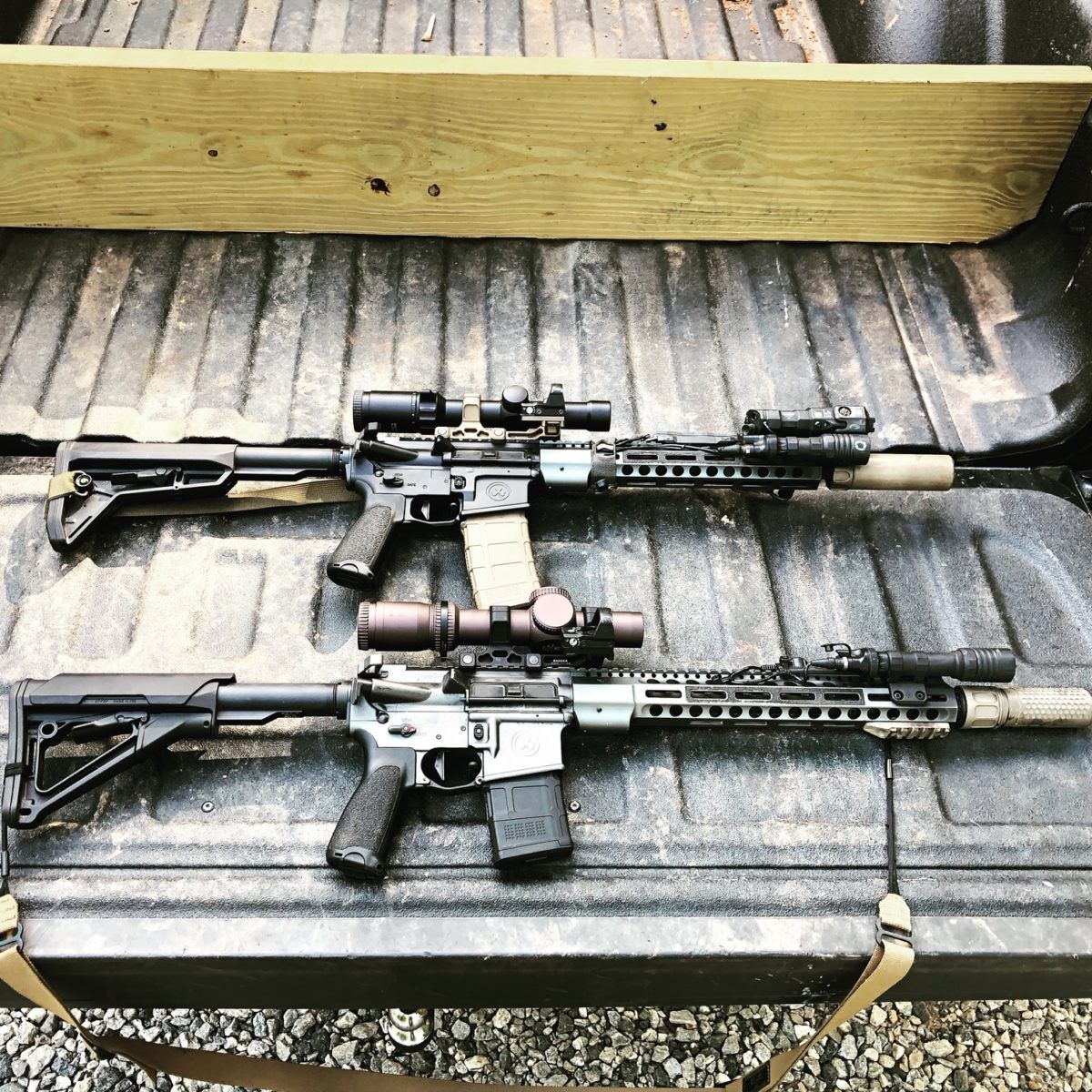
Q: Can you touch briefly on mounts for LPVOs?
Mark Smith, JBS Training Group – You cannot take an excellent optic and put it in a really cheap mount on a really good gun and expect good results. There are so many facets, and details that go into distance shooting…they all have to be there. You can’t just have one. You have to have them all. The mount is one of the most underrated and least talked about variables. The ability to get what you need out of an optic is limited by what is holding the optic onto the gun.
I personally prefer traditional mechanical lock-type mounts that are non-quick-detach. I don’t prefer QD mounts. Number one, I don’t feel they are as mechanically strong as standard bolt-on type mounts. Number two, I have yet to run into a situation where I have needed to quickly detach my QD mount.
Now, if you are running into situations where your optics are breaking, and you are having to rip it off the gun for whatever reason…cool. I don’t run into those situations, so I don’t really care about that. Shout out to Badger Ordnance, as I truly believe they make the best mounts in the industry. It’s not just the one thing but more the sum of its parts.
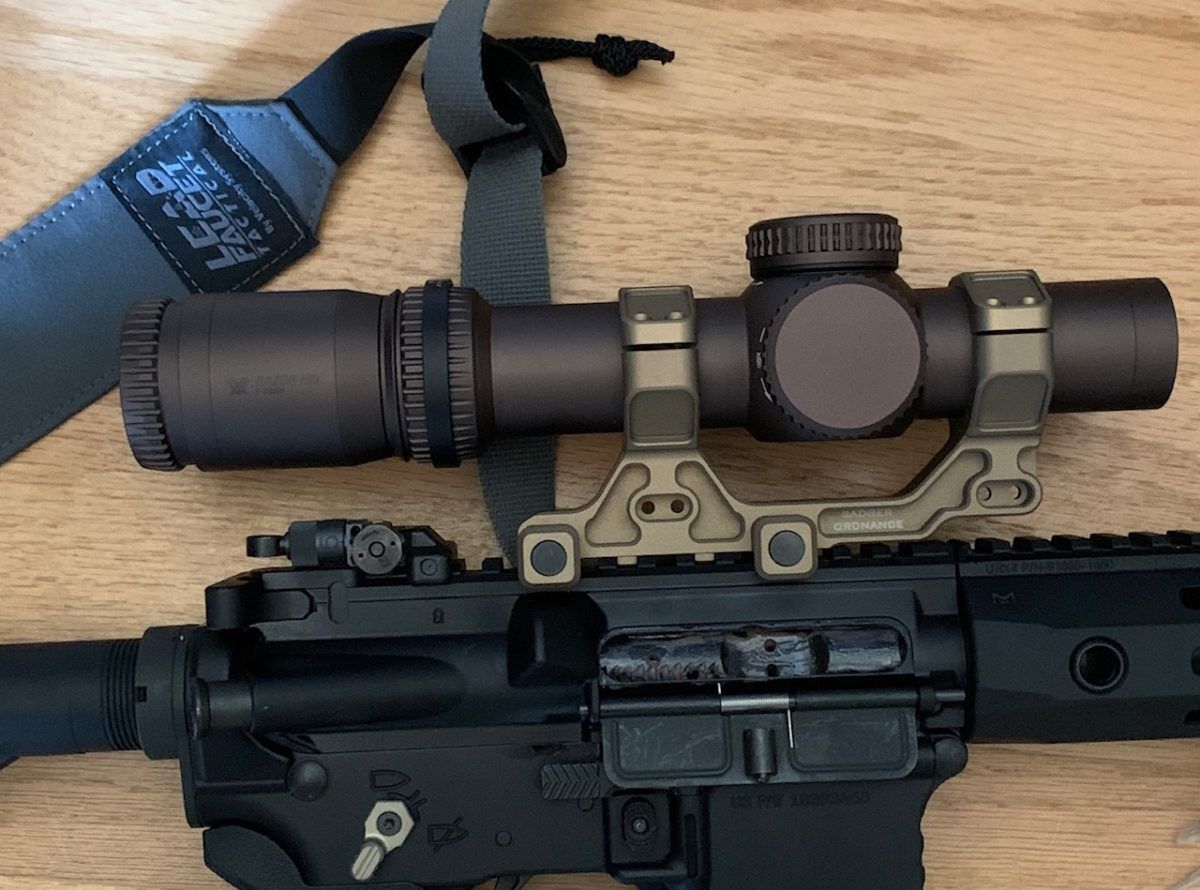
Q: Back to rifle setup, can you walk our readers through what you think they need to consider if they are looking to build a rifle equipped with an LPVO?
Mark Smith, JBS Training Group – The number one thing that I need out of a rifle is reliability. That’s first and foremost. If the gun won’t run, it doesn’t much matter what happens after that. Second to that is the accuracy that the firearm is capable of. I want the most accurate rifle that I can practically acquire. Your readers need to understand that as we get out to 300, 400, 500 yards, that is a hard shot to make with almost any gun…much less a gun that will not group 3 MOA at 100 yards.
Every time you go another 100 yards, you’ve just added to your group size…and that’s not even factoring in the ammo or the shooter… That’s in a perfect world…it does not account for wind or anything. So, if we’re building a rifle we might want to employ at those distances, it must be able to hold 1 MOA or less.
Another thing you have to consider is what kind of ammo you are going to be throwing at your gun. Match-grade ammo is costly for a reason. Black Hills ammo is my go-to for distance shooting, and for anything where I want to be super-accurate because Black Hills is a company I trust. They’ve done a lot of research on what they are doing, and their 77-grain OTM has a great track record of flying straight. Every single 77-grain OTM that rolls out of their factory is hand-inspected one at a time…so yes, it is more expensive, but I find that the value is there. It’s one of those things where “if you gotta have it, you gotta have it.” If you use 3 MOA ammo, it’s the same issue you have when you have a 3 MOA gun. If you put those two things together, well… God’s speed …you’re going to have a tough time.
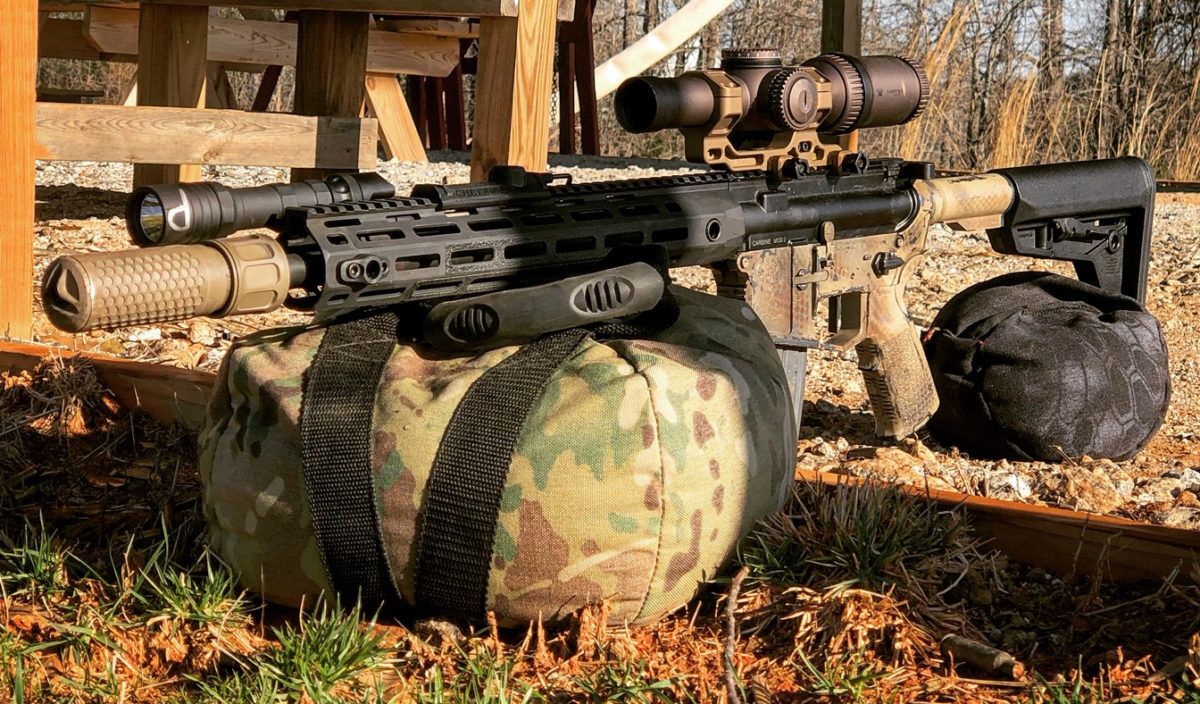
Finally, another thing to consider is the shooter. If you struggle shooting groups or struggle being accurate, all of that is going to play into your ability to be successful at a distance.
As far as the rifle, barrel length, and things like that don’t really matter as far as impacting a target. There is this big misconception out there that longer barrels are more accurate. That is not true. Longer barrels are faster. I have found that shorter barrels actually tend to yield a degree of accuracy slightly higher than longer barrels. I am not a super-duper precision guy, so I don’t know the science behind how that happens, I just know it’s what I’ve seen on paper with multiple rifles I’ve seen shot at distance.
So, don’t get wrapped around the axel about how long your barrel is or that because you have a 12.5″ gun you cannot do X, Y, and Z. I shoot out to 600 yards with my 12.5″ gun all the time. I have no struggle whatsoever. The Hodge 12.5″ that I use regularly will absolutely hold a ¾ MOA group any day of the week…and a half-inch on a good day. It does great at a distance and is pretty much my go-to gun for just about anything…So, shout out to Hodge Defense. (laughs).
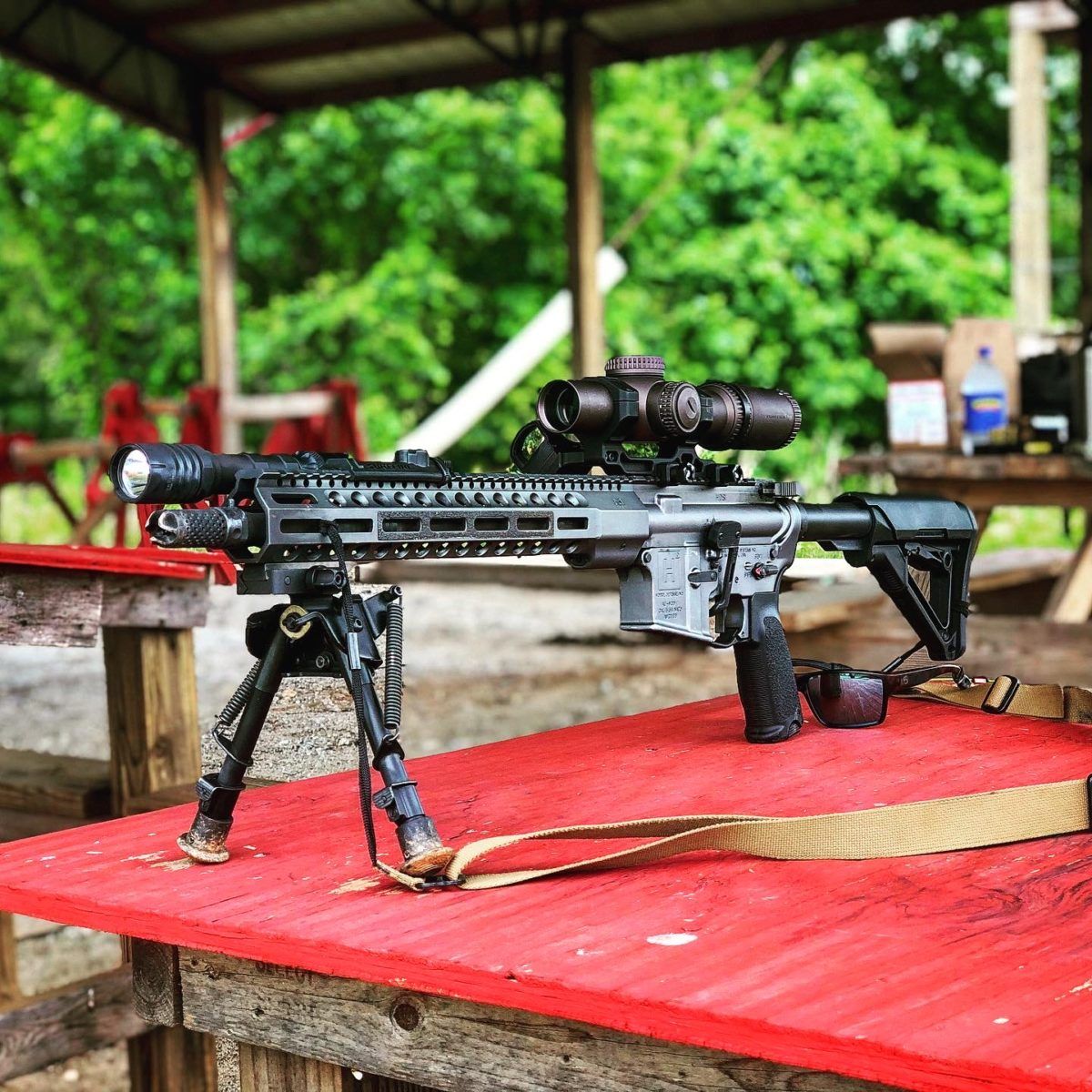
It’s also important to know that just because you don’t have exactly what I have, that you cannot do it, that’s not true. I have certain things that I like and that I like to do, but plenty of people out there can outshoot me that do things differently, and that’s OK.
So to recap, make sure the gun can run. Make sure it is an accurate gun, and make sure you are feeding it performance fuel. If you put moonshine in a NASCAR, you’re going to get the results that match.
###


